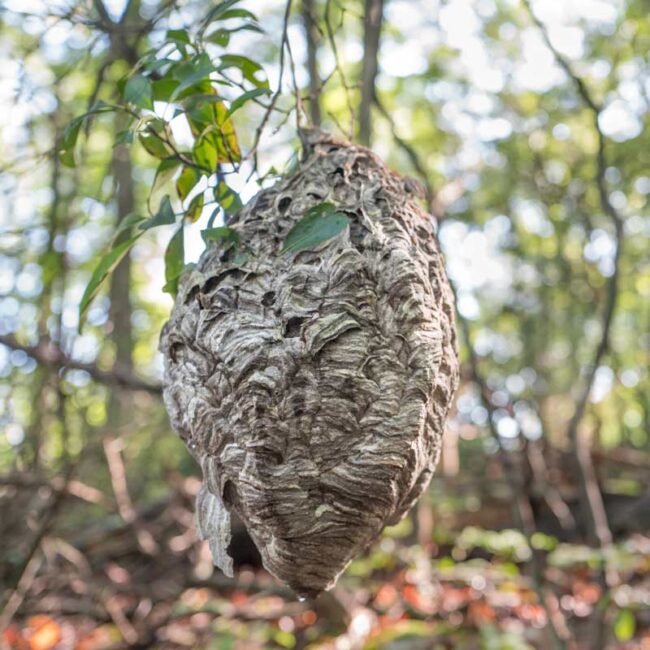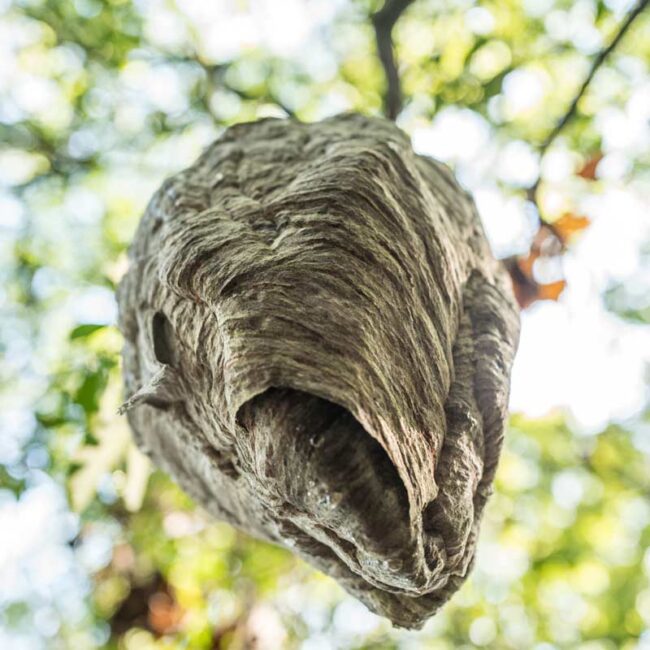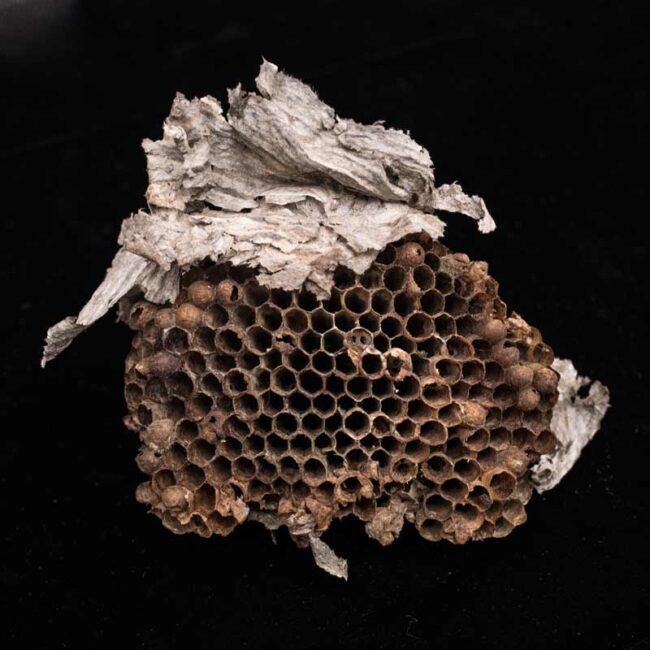

This foot-long nest belongs to a colony of Bald-faced Hornets. The name Bald-faced Hornet is doubly misleading. First, the insect is actually a wasp, not a true hornet. Second, the adjective “bald-faced” suggests a lack of facial features, but “bald” is simply an unfortunate shortening of “piebald,” which means having a black and white design. Bald-faced hornets are aggressive, swarm, and can sting multiple times. They have been known to fly past several people to target the exact individual who disturbed their nest and to remember the attacker for up to a week.
The beautiful design of the nest belies the danger within. Its scallop-shaped layers are made of a pulp, which the wasps produced by combining organic matter with their saliva. This outer shell is up to twelve layers thick. Inside, tiers of hexagonal honeycomb once housed hundreds of wasps. I use the past tense because I came upon this nest in late September when the inhabitants were probably gone. The queen mother who started building the nest in the spring as well as the hundreds of sterile female workers she reared have all died. Only a few impregnated queen-hopefuls survive and they overwinter elsewhere and will start a new nest next year. But horrors! All summer, this nest had been dangling at waist-level (i.e. within reach of children) just a few feet from a very popular trail in Westwoods!
